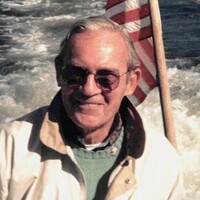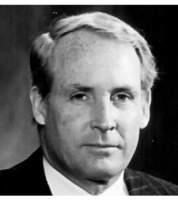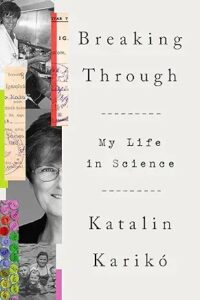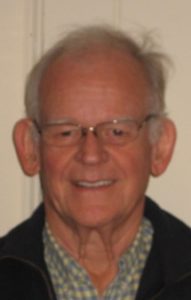 William’s Obituary
William’s Obituary
![]()
Bill was born September 30, 1931 in Washington D.C., son of the late Forrest Close and Margaret Wood Holmes. He attended Summit High School, in New Jersey and Princeton University, Class of 1953 where he was awarded a NROTC scholarship. In his senior year he was made the Midshipman Cadet Commander. After he was commissioned as an Ensign in 1953 he was stationed for three years on the fleet destroyer, USS Warrington (DD 843). Near the completion of active duty he was promoted to Lieutenant JG.
Following Princeton he attended Harvard Business School graduating with a MBA in
1958. His business career spanned 32 years as a broker on the floor of the New York Stock Exchange.
From a young age Bill enjoyed sailing at Sachem’s Head Yacht Club in Guilford, CT. He raced in nine Newport to Bermuda Races, winning the race in 1962, cruised with many clubs, and sailed transatlantic in 1984. He was currently a member of the Sachem’s Head Yacht Club, the Cruising Club of America and the Storm Trysail Club.
In 1991 he married Stephanie Illes and happily acquired two step children, Brian Ladewig (wife, Nicole) of New Canaan, CT and Kim Risley (husband, Dane, step grandchildren, Michael, Lauren, Kate) of Fairfield, CT. Following his retirement in 1994 Bill and Stephanie enjoyed traveling, hiking and cruising around the world with family and friends.
Bill won his battle with alcoholism for fifty years with the good graces of Alcoholics Anonymous during which time he helped so many on their path to sobriety.
Bill is survived by his wife, Stephanie of 32 years, and by his four children from two previous marriages and nine grandchildren: Forrest Close of Wilton, CT and his wife Nicole( Madelyn, Gaelen), George Close of Rowayton, CT and his wife Mallory (Brynley, Bennett, Forrest, Kyle), Carolyn Garth of Newport, RI (Cally, Penelope) and William Close (Phoenix) of Los Angeles, CA and Bill’s sister, Mardee Moore of Madison, CT.
A celebration of Bill’s life will be held on Saturday, May 25th at 1:00 the United Church of Rowayton.
In Lieu of flowers, donations can be made to the United Church of Rowayton, 210 Rowayton Avenue, Rowayton, CT 06853.






